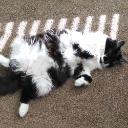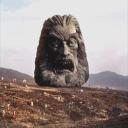Yahoo Answers is shutting down on May 4th, 2021 (Eastern Time) and beginning April 20th, 2021 (Eastern Time) the Yahoo Answers website will be in read-only mode. There will be no changes to other Yahoo properties or services, or your Yahoo account. You can find more information about the Yahoo Answers shutdown and how to download your data on this help page.
Trending News
Can you help clearing up a question on Red-shift for me that has been dogging me?
Take for example Galaxy A,B & C
A is 4 Billion LY away and is receding at 10,000 k/ps
B is 8 Billion LY away and is receding at 20,000 k/ps
C is 16 Billion LY away and is receding at 40,000 k/ps
The recession speed of the galaxies have been measured and the further away from us they are, the faster the measured recession speed. The conclusion reached is that the universe is now only expanding but accelerating.
When I look at it in a different way I conclude the universe is slowing down and decelerating.
When I take into account you cannot look out into space without looking back into time I see it as follows..
16 billion years ago the universe was expanding at 40,000 k/ps
8 billion years ago the universe was expanding at 20,000 k/ps
4 billion years ago the universe was expanding at 10,000 k/ps
To which I would conclude the universe is slowing down.
I made up the recession speeds, they are there only as a concept.
Now, I know both cannot be correct and that I am wrong, but I would like you input as to why I am wrong.
Many thanks in advance
2 Answers
- CarolOklaLv 72 years ago
You have made two false assumptions.
The Hubble constant is NOT "constant" through cosmological time.
The Hubble constant is NOT A SPEED or a velocity. While I know you probably will not do this, please sit down and the math and cancel out that per megaparsec term, which you are ignoring because you do NOT understand what it means. Start with whatever CURRENT Hubble " constant" you want. The galaxies were NOT and ARE NOT expanding. The SPACE time continuum was and IS expanding faster in the past than it is expanding NOW..
- ZardozLv 72 years ago
Take a foot long band of rubber and put dots on it every inch apart. Secure one end of it to something that doesn't move and then over a time period of 1 second stretch it out to 4 feet. Secure the loose end. Measure the distance between random dots and calculate the speed each moved away from the others. Any two adjacent dots on the band would have gone from being 1 inch apart to 4 inches apart in one second (3"/s), while the two extreme dots would have gone from 12 inches to 48 inches in one second (36"/s). Dots that had greater original separation from each other will have greater speeds of separation from each other. In other words Hubble's Law in miniature.
This is easy to see on a band of rubber because you do it all in real time. In space you can't do that. You have to stand on one of the dots and measure the speed of dots moving away from you. You still get Hubble's Law but with less precision for a whole lot of reasons. One being it isn't easy to measure the distance to anything more than a 100 million light years away — Cepheids become too dim.
Then came the Type 1A supernova. They can be seen from much greater distances. We could now measure more distant galaxies and better calibrate Hubble's law. But a problem arose. The galaxies about five billion years back were farther away than they should have been with a constant constant in Hubbles law. The constant got bigger.
In your example, the Hubble constant would be decreasing (precipitously). You wouldn't be getting what one sees on the rubber band. In your example two adjacent dot in the middle of the band would be 4 inches apart but two adjacent dot's at the extremes would have to be many time 4 inches apart. The extreme adjacent dots would have to be moving away from each other much quickly than dots near the middle (Point in fact, it would inarguably display a center which the Universe does not).The band would have had to be stretched much more then four feet to account for that.
Source(s): [n] = 10ⁿ



